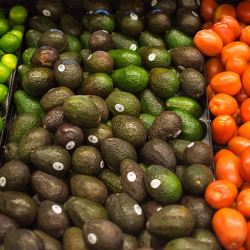
The Trump administration’s has proposed to create deliverable food for SNAP participants, a "Blue Apron” for those without disposable wealth. It is clear that a Blue Apron service would be a logistical nightmare, but more importantly, it distracts from the real issue of how to efficiently help the hungry. I previously reviewed the latest data on how well the introduction of new supermarkets in food deserts has gone – increasing markets but not changing eating habits. So at least the new proposal is a different approach. Surprisingly for an administration that stresses its business acumen, it is not particularly entrepreneurial and certainly will not be a friend of small business. It is an old-school big business solution relying on the thinking of Henry Ford more than Jeff Bezos or even CVS.
One of the problems with food maldistribution is transportation, for the majority of us, and certainly, for those being helped by SNAP, you have to go to the food. The suburban purchaser is driving their car to go food shopping once a week is not achievable by everyone. This is especially true for urbanites where using mass transit reduces your capacity to bring home enough groceries to avoid having to go every day or so. And for the rural areas, it can be a long trip, so forgetting to get milk becomes a big problem.
Consider a different distribution model; consumer supported agriculture (CSA). Members pay an annual fee and get weekly boxes of fresh seasonal produce. The CSA funding enables community farms to better plan their growing and provides them with a safety net regarding income. The difficulty remains that CSA does not deliver, you still pick up the food. But for many small rural areas and certainly for the urban centers there is already a brick and mortar distribution center in place, small mom and pop operations, bodegas.
Bodegas are well located but may not carry as many groceries as we would like because of cost or space or demand. Why not harness their locality as distribution centers and provide them support to grow and maintain themselves. They are a stable address, they can store fresh produce, and they can help provide information on local tastes and needs, customizing the experience.
I suggest that this is a trifecta: better food choices, support for local agriculture, support for local business. I am sure there are hurdles to overcome and flaws in my approach. But it is time to reconsider how food may be distributed better for the hungry. My modest counterproposal offers a different approach that would maintain the autonomy of choice by SNAP recipients and at the same time support a rising entrepreneurial class of small business, local farms, and local unchained markets, that is endangered by much larger businesses. Think of the budget proposal as a flawed opening to a broader conversation. The most significant error we can commit is to let the conversation die without offering a better suggestion. It may be too important a conversation to leave up to Congress, the talking heads and Twitter.
